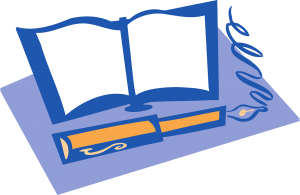NaNoWriMo: It’s not too soon to be thinking about it
 If you’re an author, you have probably heard of NaNoWriMo—National Novel Writing Month. You can visit their website at NaNoWriMo.org.
If you’re an author, you have probably heard of NaNoWriMo—National Novel Writing Month. You can visit their website at NaNoWriMo.org.
November is designated as National Novel Writing Month. Yes, I said November, the month of Thanksgiving, the busiest travel time of the year. The time for long lines at airports and bumper-to-bumper traffic. Add to that, preparations for Christmas. It’s a time for family, falling leaves, bonfires, and homemade soup.
I’m sure that whoever designated November for this honor was neither a writer nor a mother. Okay, now that I’ve gotten my pet peeve out of the way, I’m still a writer and NaNoWriMo is coming.
Here’s the premise. Commit to writing 50,000 words in 30 days. If you sign up on their website, you’ll see opportunities to track peaks and valleys in your journey and earn achievement badges. More importantly, you’ll have the chance to interact with other writers, those who understand your challenges. They can inspire and motivate you.
If you want a successful NaNoWriMo experience, plan ahead. Their website suggests that you begin planning in September. That doesn’t mean starting your word count.
Prewriting is a timely task. Here are a few important elements of the prewriting stage.
• Inspiration: What are you going to write? Remember, this is a novel. That includes fiction and some non-fiction books. A non-fiction novel would be based on true events, but written in a story style. This can include memoirs. It does not include non-fiction such as a devotional or self-help book.
• Research: The need for this varies, but all novels require it. If you’re a writer of historic fiction, your research will be extensive. Your novel set in the Civil War, Holocaust, or Regency Era must be authentic to the culture. A contemporary novel still requires research. I needed to seek out some legal advice for The Street Singer which involves a law suit, and medical advice for a work-in-progress where a character had a traumatic brain injury. I couldn’t have written Beauty for Ashes without the expertise of my friend from Puerto Rico. Research your setting. Those who live there will appreciate your accuracy.
• Plotting: Wherever you happen to fall on the spectrum from pantsers to plotters, some planning is necessary. Before you begin, even the pantsers should know how the story will end. You need to plan for character development. The protagonist must show some changes from the start to the finish. I like to allow details and scenes to emerge along the way. I’m not a firm plotter with a chapter-by-chapter outline. Yet I have a skeletal plan from the start.
All of these prewriting tasks can be accomplished before the start of NaNoWriMo. It will help to make your actual word count go quickly. The required 50,000 words can be a novel. Hemingway was known for keeping them short. But typically, publishers look for closer to 80,000 words. That’s okay. You have your 50,000 words which include your plotted story. When November’s over, it’s time for post-writing. I’m not sure if that’s an accurate term, because this is such an important, integral part of creating a great novel. Now’s the time to edit, edit, edit. Add sensory details. Examine emotions. Don’t add words for the sake of word count. Add them to grow your story.
I love the idea of a National Novel Writing Month. It provides the motivation often needed. I did the math—50,000 words in 30 days means 1,667 words daily. Sigh. A doable task in January, a challenge in November. But come November, I’ll be writing. Will you?
2 Replies to “NaNoWriMo: It’s not too soon to be thinking about it”
GraceAnne did this when she was in the 7th grade. I think the word count was lower for teens, but she committed to the 50,000 words. It was a great learning experience for her. Help her to take on other projects with great confidence, I think.
Good for her. I hope she’s still writing.